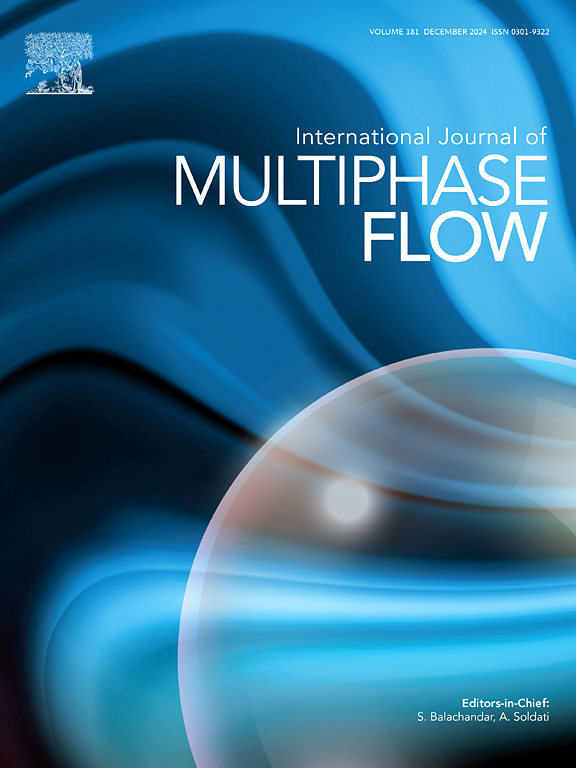闪速炉气-颗粒反应流及颗粒聚集的CFD-PBM模型
IF 3.6
2区 工程技术
Q1 MECHANICS
International Journal of Multiphase Flow
Pub Date : 2025-03-31
DOI:10.1016/j.ijmultiphaseflow.2025.105233
引用次数: 0
摘要
随着进料速度的增加,闪速熔炼炉中熔融颗粒的聚集已成为人们日益关注的问题,需要更深入的了解才能进行实际调整。本文提出了一种耦合CFD-PBM方法来研究炉内气-颗粒反应流动和颗粒聚集。基于实验数据,开发了基于温度的聚集核,并将其集成到粒子演化模型中。模拟结果与实验数据相吻合,证明了颗粒分布半径和生长速率的合理吻合。进一步分析了气流动量比和注入粒径对颗粒演化的影响。结果表明,硫化物放热氧化产生的高温区始于反应轴的中高。在这个区域内,熔融颗粒聚集并生长到注入尺寸的两倍以上。增加气流动量比可以增强颗粒的点火和氧化,颗粒的分散可以减少碰撞和聚集。较大的注入颗粒尺寸也会减少聚集,但可能会延迟颗粒在反应轴中间的点火和氧化。然而,在到达沉淀剂后,较大颗粒的氧化速率仍然相当。这些结果表明,增加气流动量比和注入粒度可以提高生产效率,为优化FSF操作提供了一种实用的策略。本文章由计算机程序翻译,如有差异,请以英文原文为准。

CFD‒PBM modeling of gas‒particle reactive flow and particle aggregation in the flash smelting furnace
The aggregation of molten particles in flash smelting furnaces has become a growing concern as feed rates increase, necessitating a deeper understanding to enable practical adjustments. This study presents a coupled CFD‒PBM approach to investigate the gas–particle reactive flow and particle aggregation within the furnace. Based on experimental data, a temperature-based aggregation kernel is developed and integrated into the PBM to characterize particle evolution. The simulations are validated against experimental data, demonstrating reasonable agreement in terms of particle distributed radius and growth rate. Furthermore, the effects of airflow momentum ratio and injected particle size on particle evolution are analyzed. The results reveal that the high-temperature region, generated by the exothermic oxidation of sulfides, begins at the mid-height of the reaction shaft. Within this region, molten particles aggregate and grow to over twice the injected size. Increasing the airflow momentum ratio enhances particle ignition and oxidation, and greater particle dispersion reduces collisions and aggregation. Larger injected particle sizes also decrease aggregation but may delay the particle ignition and oxidation in the middle of the reaction shaft. However, the oxidation rates of larger particles remain comparable upon reaching the settler. These findings suggest that increasing the airflow momentum ratio and the injected particle size improves production efficiency, presenting a practical strategy for optimizing FSF operations.
求助全文
通过发布文献求助,成功后即可免费获取论文全文。
去求助
来源期刊
CiteScore
7.30
自引率
10.50%
发文量
244
审稿时长
4 months
期刊介绍:
The International Journal of Multiphase Flow publishes analytical, numerical and experimental articles of lasting interest. The scope of the journal includes all aspects of mass, momentum and energy exchange phenomena among different phases such as occur in disperse flows, gas–liquid and liquid–liquid flows, flows in porous media, boiling, granular flows and others.
The journal publishes full papers, brief communications and conference announcements.

 求助内容:
求助内容: 应助结果提醒方式:
应助结果提醒方式:


